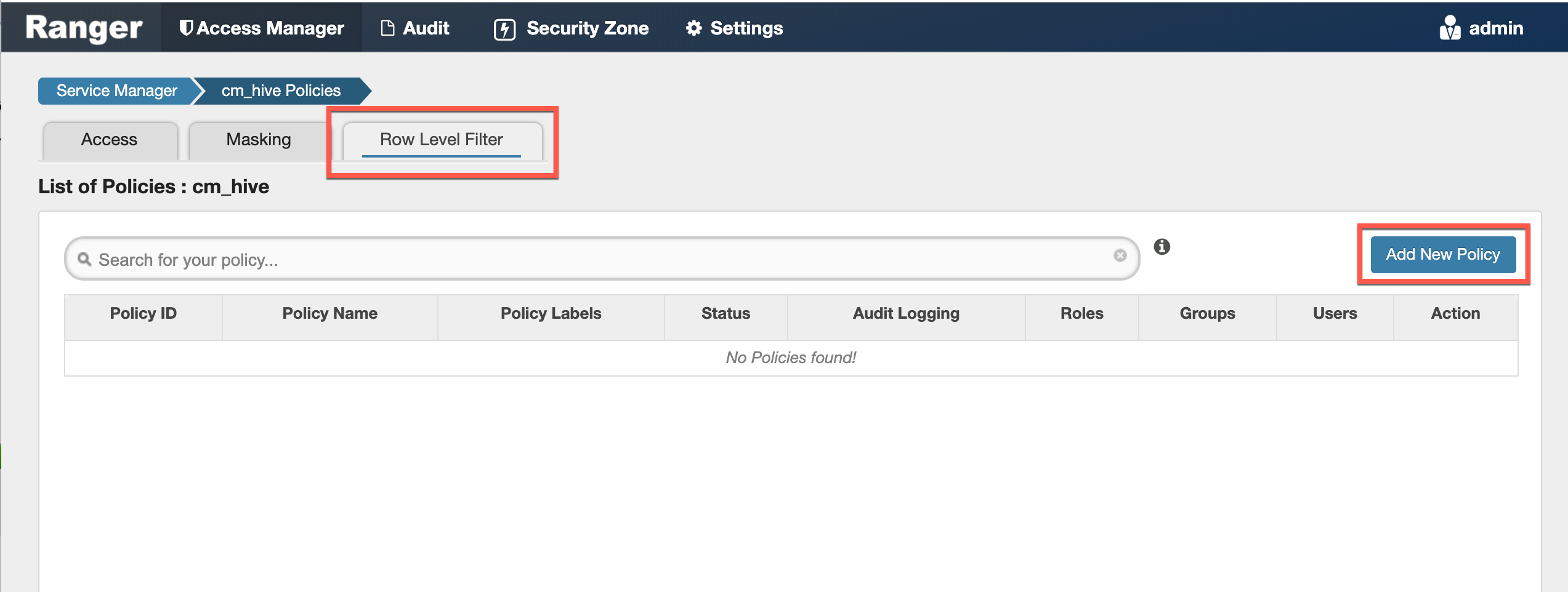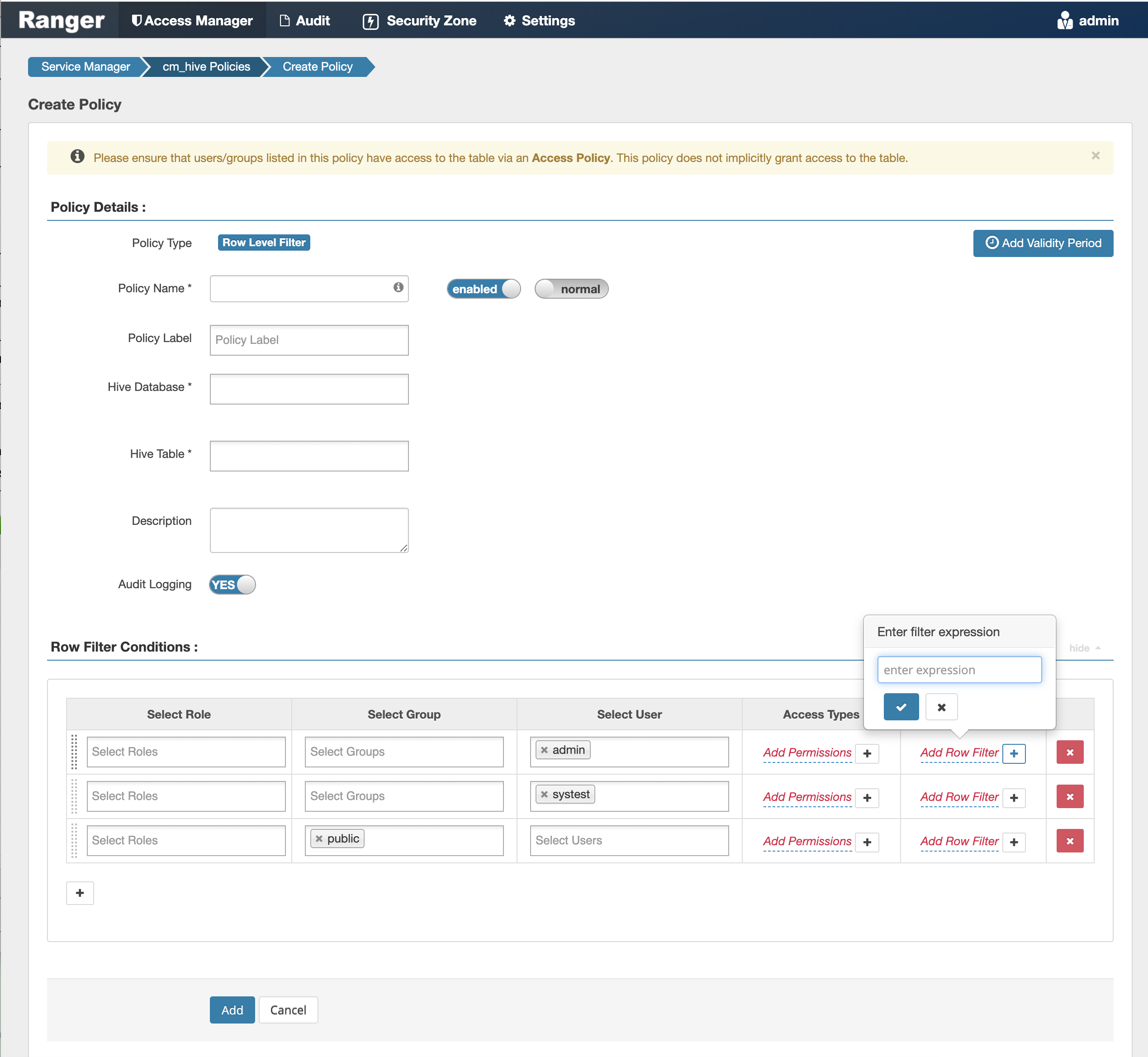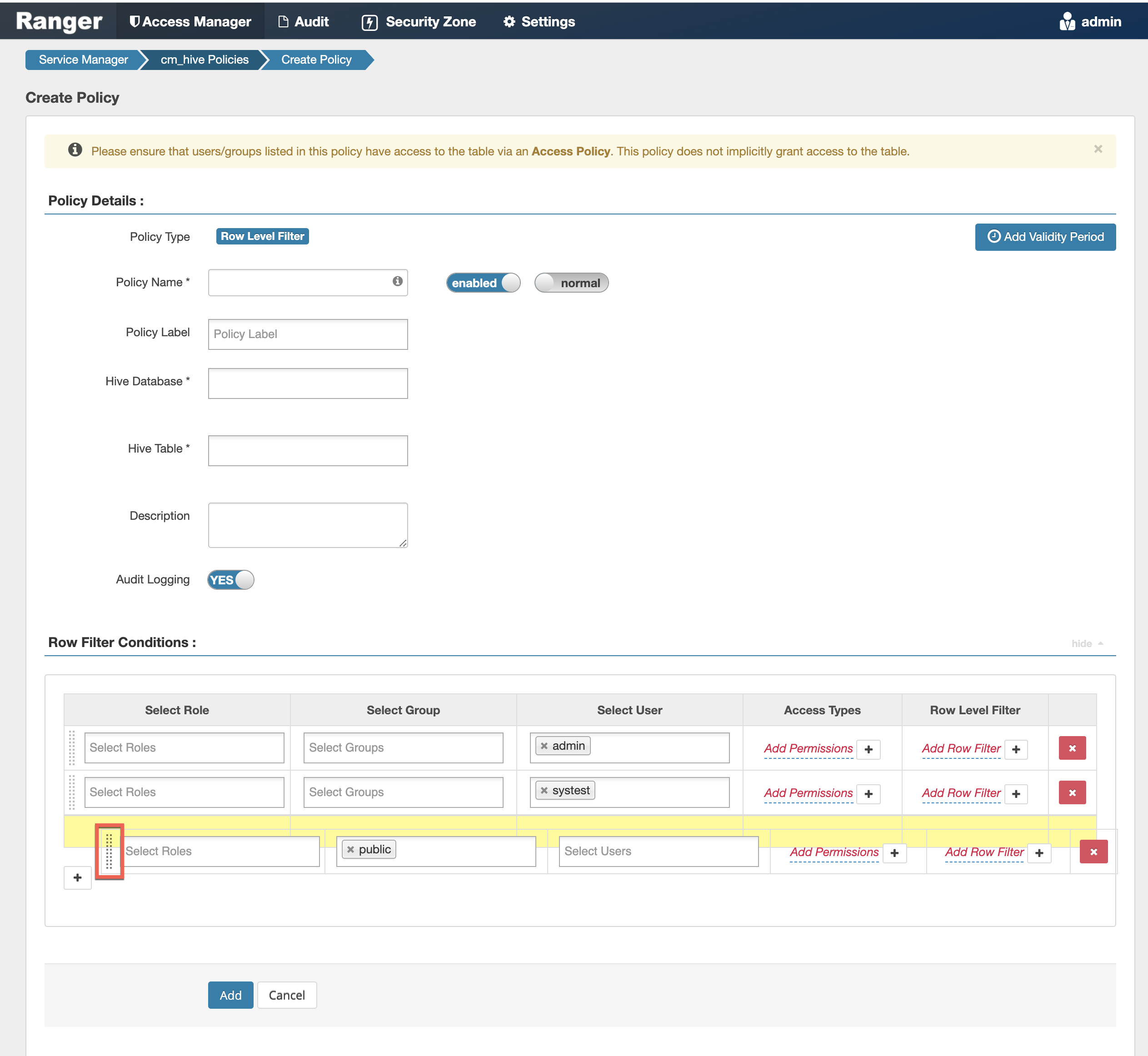Row-level filtering in Hive with Ranger policies
Row-level filtering helps simplify Hive queries. By moving the access restriction logic down into the Hive layer, Hive applies the access restrictions every time data access is attempted. This helps simplify authoring of the Hive query, and provides seamless behind-the-scenes enforcement of row-level segmentation without having to add this logic to the predicate of the query.
Row-level filtering also improves the reliability and robustness of Hadoop. By providing row-level security to Hive tables and reducing the security surface area, Hive data access can be restricted to specific rows based on user characteristics (such as group membership) and the runtime context in which this request is issued.
Typical use cases where row-level filtering can be beneficial include:
- A hospital can create a security policy that allows doctors to view data rows only for their own patients, and that allows insurance claims administrators to view only specific rows for their specific site.
- A bank can create a policy to restrict access to rows of financial data based on the employee's business division, locale, or based on the employee's role (for example: only employees in the finance department are allowed to see customer invoices, payments, and accrual data; only European HR employees can see European employee data).
- A multi-tenant application can create logical separation of each tenant's data so that each tenant can see only their own data rows.
You can use Apache Ranger row-level filters to set access policies for rows in Hive tables. Row-level filter policies are similar to other Ranger access policies. You can set filters for specific users, groups, and conditions.
The following conditions apply when using row-level filters:
- The filter expression must be a valid WHERE clause for the table or view.
- Each table or view should have its own row-level filter policy.
- Wildcard matching is not supported on database or table names.
- Filters are evaluated in the order listed in the policy.
- An audit log entry is generated each time a row-level filter is applied to a table or view.



